Saint Laurent is a city located 15 nautical miles up the Maroni River, which is located on the border between French Guiana and Suriname. We have been somewhat hesitant about going up rivers with a boat we are still getting to know. Navigation can be tight, depth measurements not to be trusted as the river bed changes rapidly, and the currents fierce as it changes from low to high tide.
We therefore planned our approach to enter during daylight and favorable tides, so we could follow the tide upriver. We therefore spent the first night at an anchorage close to the river mouth, and it was truly quite the change to experience an anchorage with no swells. As we dropped the anchor, it was dead silent and the boat had no movement at all. Such a big change, and we enjoyed a quiet evening with a very good night’s sleep.
The next morning we motored up the river, witnessing the dense rainforest with lots of mangrove trees. There are not a lot of settlements on this part of the river, but we could see some villages on the Surinamese side.
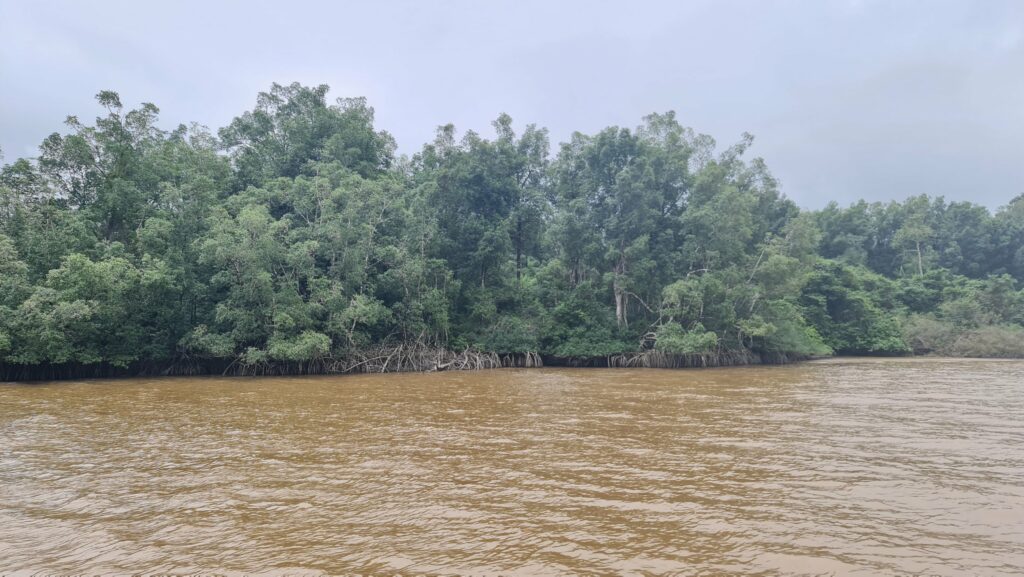
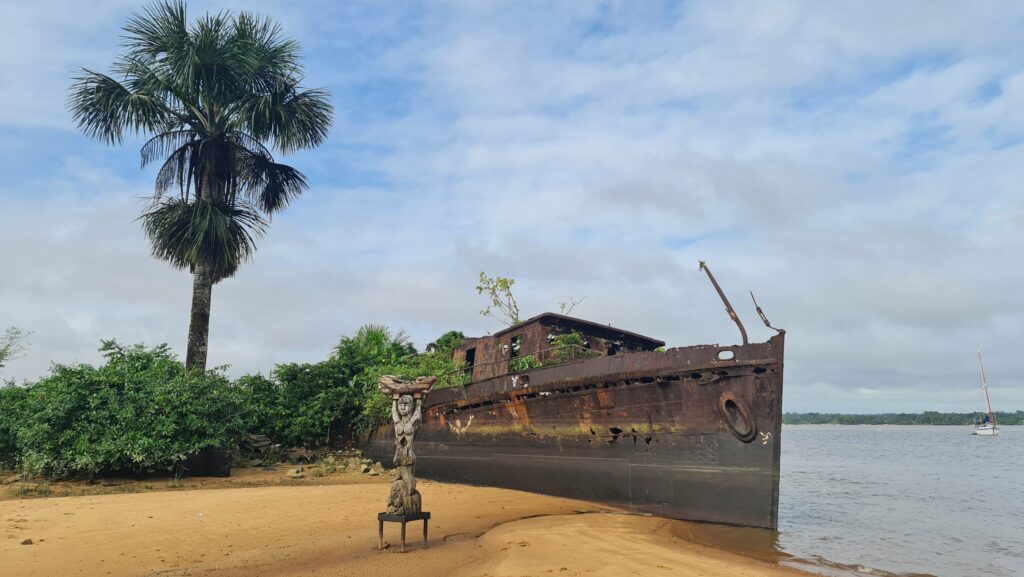
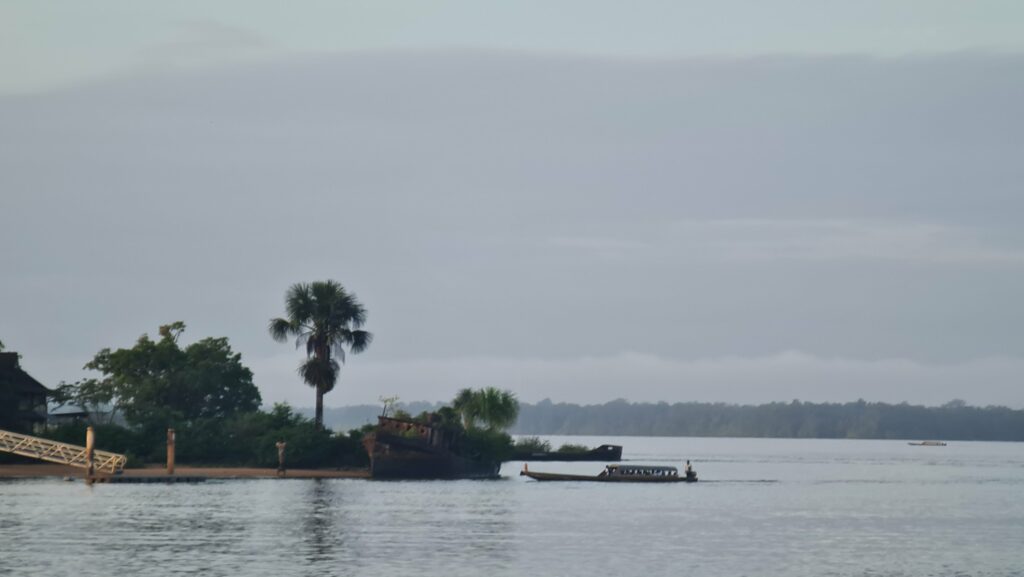
The color of the river is murky brown, and we have filled up our water tanks as we cannot make water here – it would clog up our filters right away. There is quite an abundant animal life here, and these waterways host caymans and piranhas (further upriver) and the nearby jungle hosts panters, jaguars and several snakes, such as the anaconda. We are looking to do some jungle exploration while we are here, but it will happen on our way out, as we need some local intel on which creeks we can enter safely.
French Guyana is considered a department of France, and it is one of South America’s wealthiest countries. The currency is the Euro and there are many from France who come here to work for a few years. Especially school teachers, as they get paid about 40 percent more here than in France. As a result, it is actually quite expensive here. We are running low on fresh produce, and at the local market we easily paid 5 Euros for just a few tomatoes and a cucumber.
There are quite a few colonial houses here, but unfortunately they are not kept in a very good manner, like we witnessed in Paramaribo, Suriname. Here, they are not allowed to tear them down, same as there. However, here they can replace them with new buildings if they fall apart. Due to this, many of these houses are not well maintained, and the owners are just waiting for them to fall down.
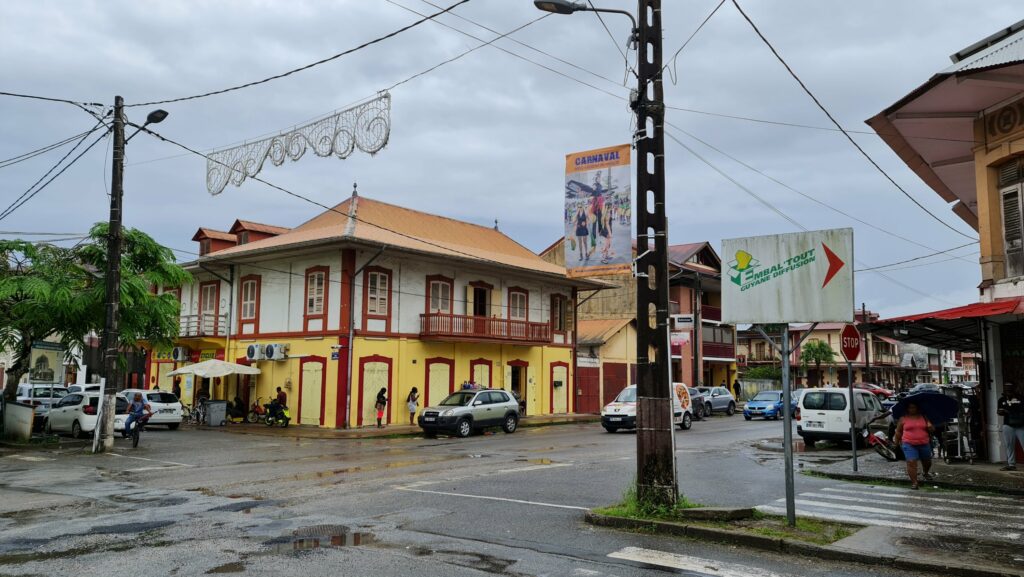
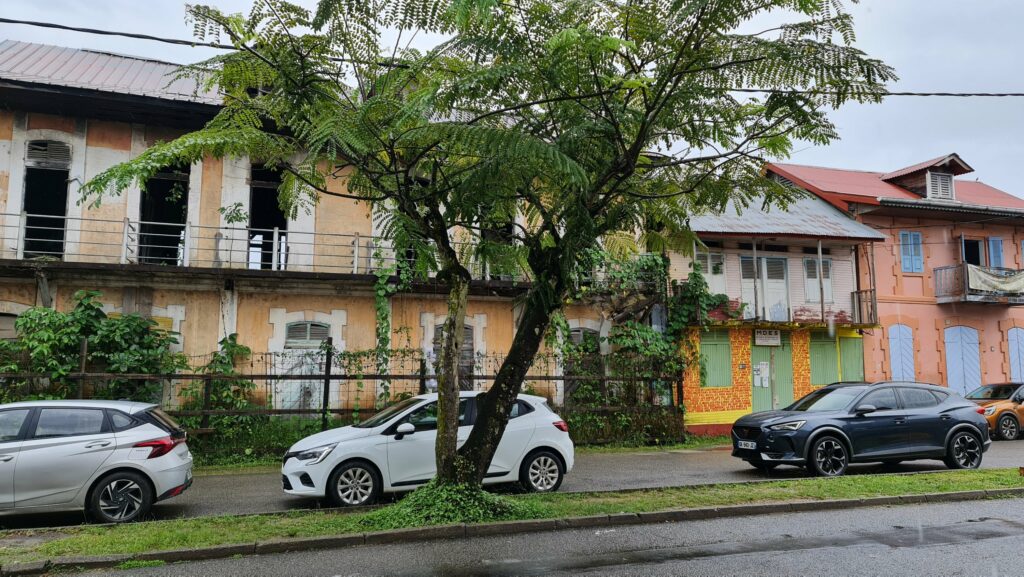
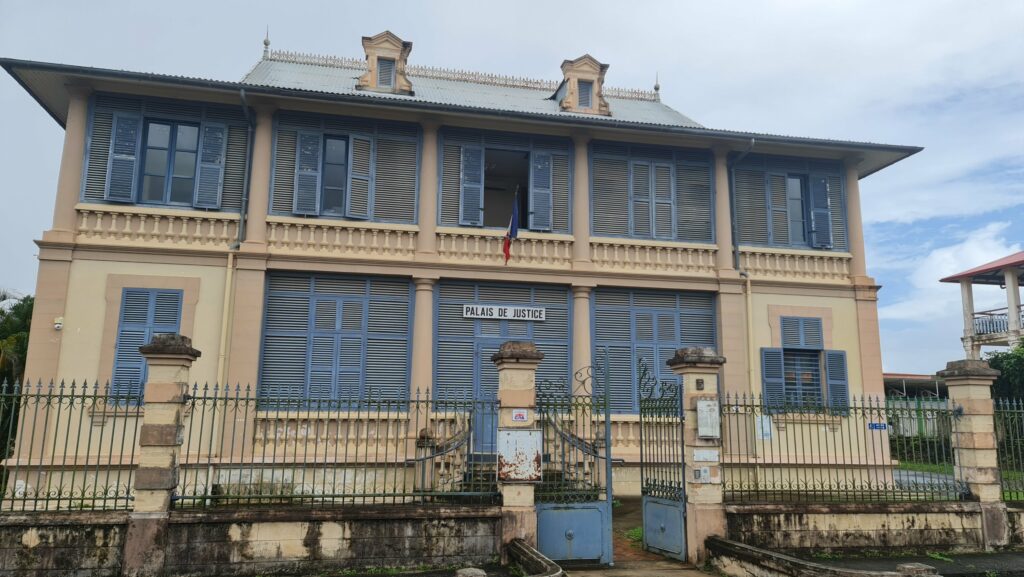
The city has about 60,000 inhabitants, and was established to be the first point of arrival of the prisoners being sent from France. A total of 70,000 prisoners were sent here during the 101 years in operation. Same as with the penal colony at Iles du Salut, the colony was established by Napoleon in 1852, and was operational up until 1953.
The city had a total of five camps, and there were all kinds of different criminals here, from the ones doing petty theft to prisoners sentenced to be guillotined. The last prisoner was guillotined here in 1946. Papillon was here on two different occasions, and we got to visit his cell and see his name which he carved into the cell’s floor.
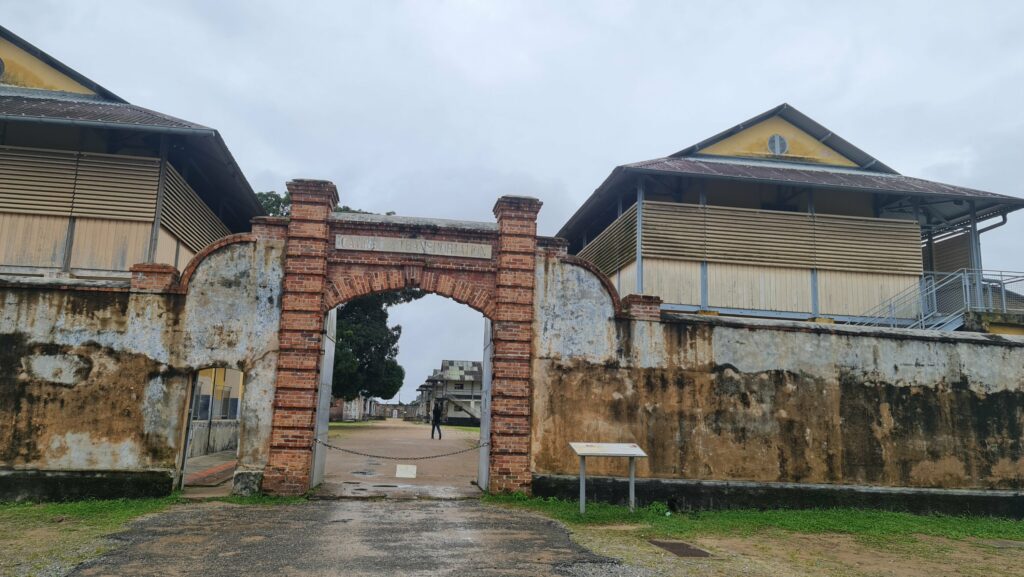
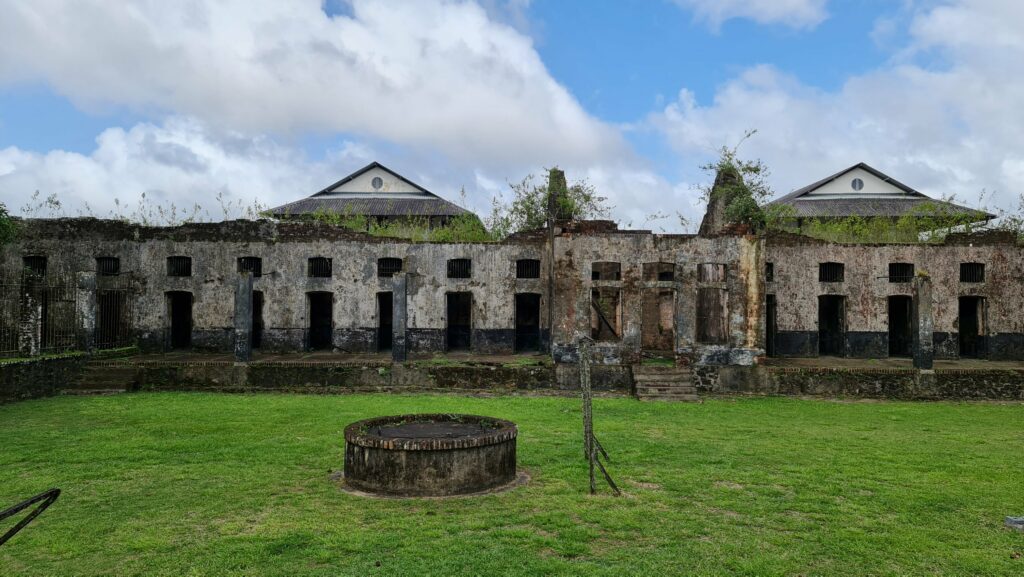
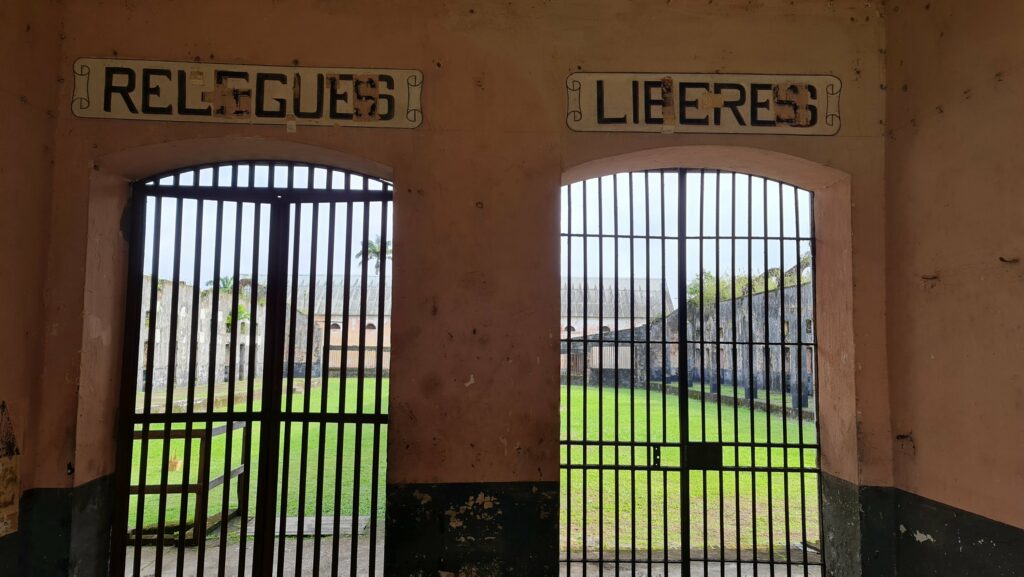
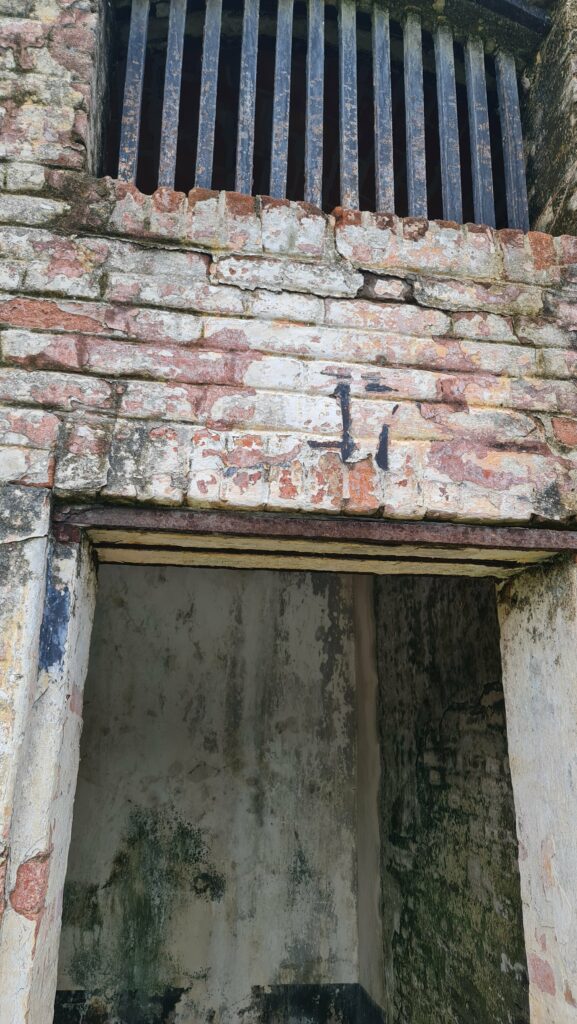
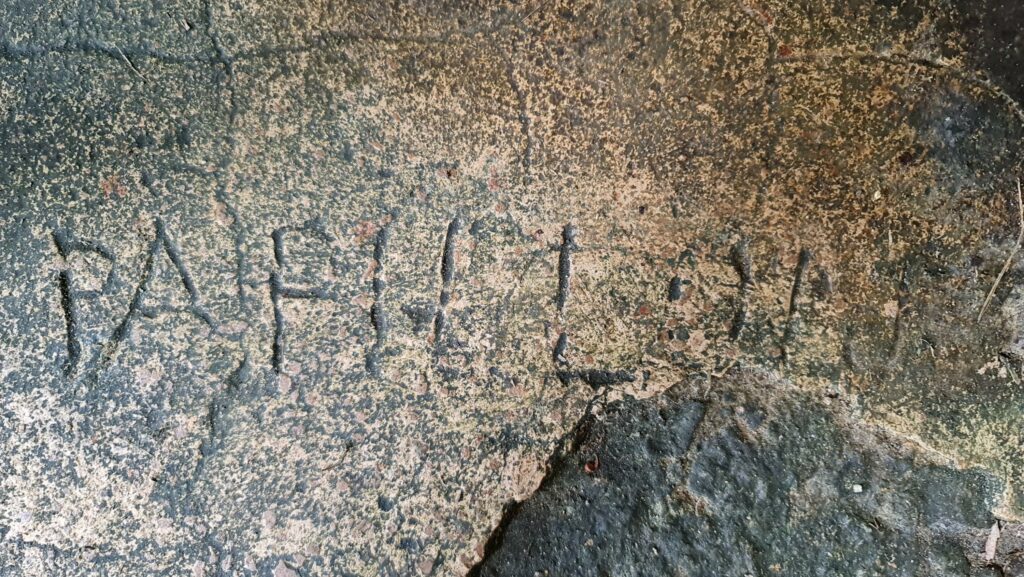
We are anchored at one of the buoys of the local yacht club, and felt that the anchorage was so safe that we dared to leave Noxoma for three nights to Paramaribo, Suriname. The yacht club was started by an Italian sailor about ten years ago, and him and his wife are still running it today. We were really good taken care of, he handled our check-in and check-out at the yacht club, the cafe is happening in the afternoons, and the wifi reached our boat most days. He also helped us with transportation to the grocery store, contacts in Suriname, intell on local places to go here, including the creek we are planning to sail on, etc. We can truly recommend this as a safe anchorage, with 20 well serviced buyos handling boats up to 50 tons. If you are stopping in French Guiana, this is the place to be! Some people also leave their boats here for a few weeks to travel home and visit family.
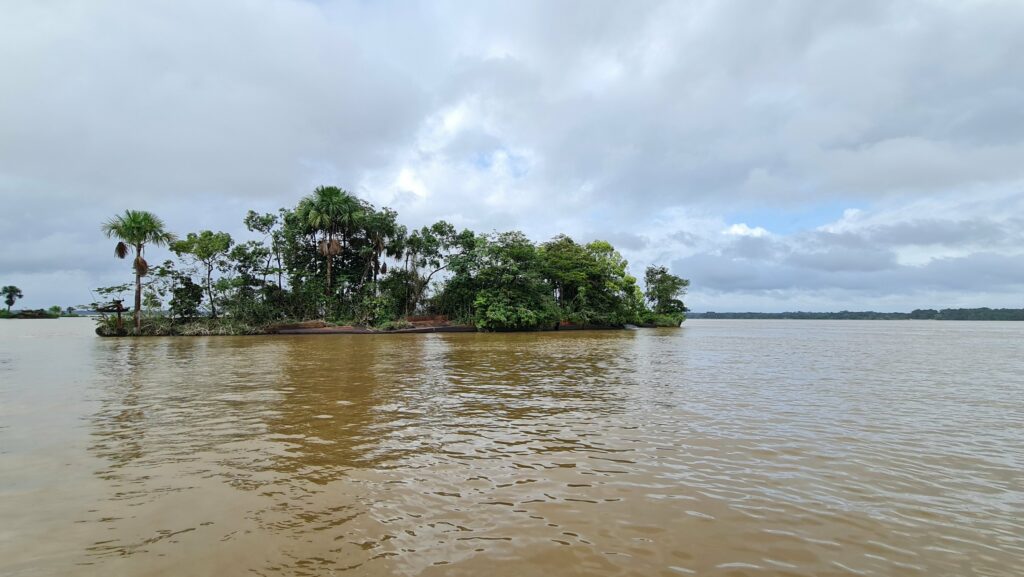
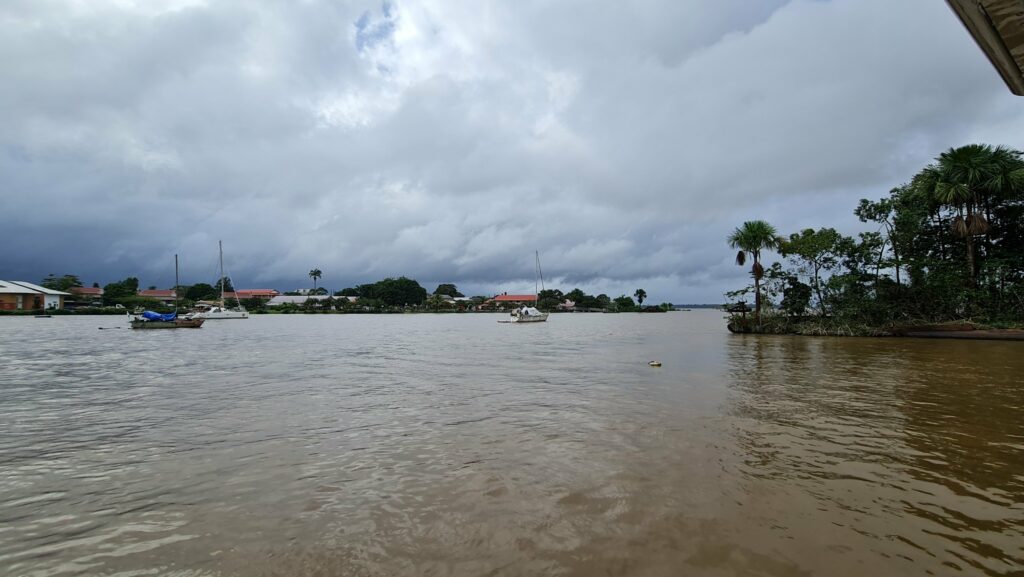
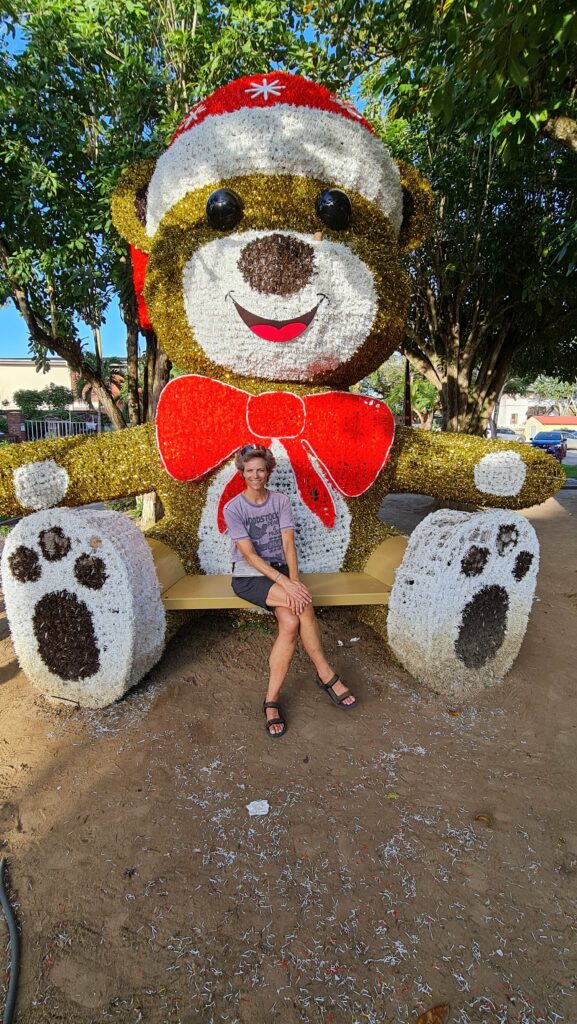
One of the most important events of the year in the city, is the Miss Saint Laurent pageant. We witnessed rehearsal that took place on a square just by the dinghy dock every other night. Girls and some boys of all ages were practicing their catwalk to the same tune for hours. This also was the square for kids biking and roller skating, so this was an amusing study that took place just outside the yacht club.
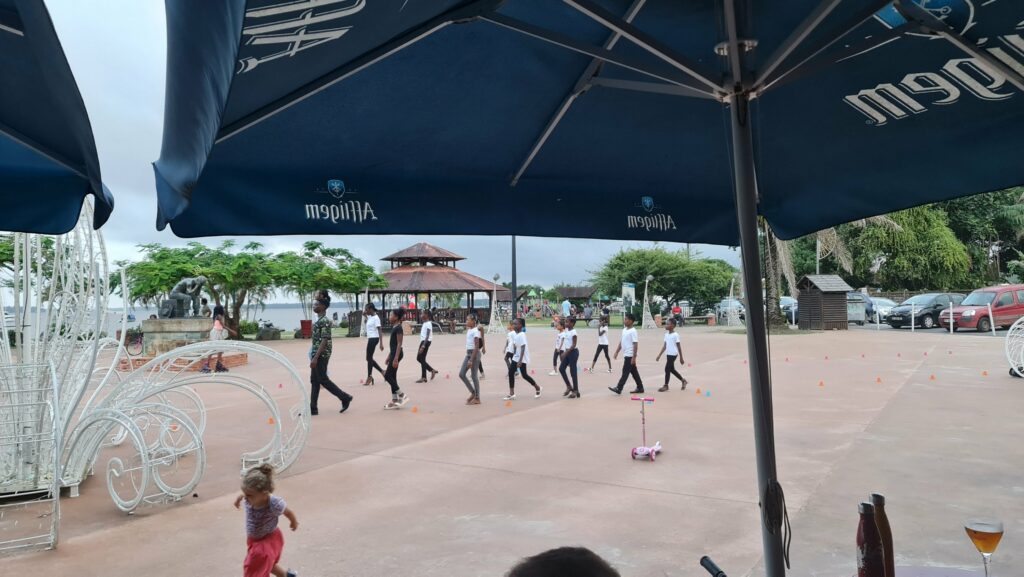
One of the effects of being considered part of France, is that the people here have access to the same kind of social help as the population of France. Apparently, this means that for each child you have, you receive Euro 230 per month in social aid from the government. This is quite a lot of money for most of the population here, so it has become a local term to have a job with a ‘mom social aid income’. Of the population of 60,000 in this city, half of them are below 13 years old.
Another peculiar item of information we learned, is that Europe’s largest nature reservation is located here, and we are smack in the middle of it. So, our next stop before starting our passage towards Trinidad, is going up one of the creeks and spending a night in the rainforest. I will share more about this experience when we get to Trinidad in about one week’s time.
As, always, the Captain will share updates from our passage on the Captain’s logbook.
